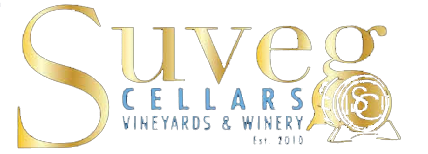New Release: 2016 Barbera (Santa Barbara County)
Barbera is grown extensively in the Piedmont region of Northwest Italy where the vines represent 35% of the nearly 131,000 acres of vineyards and official documents record its possible cultivation as early as the 13th century. Although traditionally used in Piedmont for production of simple table wine, oak aging implemented in the 1980’s has considerably improved production conditions enabling the grape to yield a more sophisticated wine. Often harvested based on acidity and not brix (sugar), the use of juicy Barbera grapes for blending has added to its popularity. Currently, it is the most widely planted variety in Piedmont and the 4th most widely planted grape in Italy.
Barbera does not have hard, tannic edges, does not require prolonged aging and yields a captivating medium to full-bodied wine with a magenta hue and rustic character. Naturally high in acid, its vibrancy makes it a great counterpoint to food. There most prestigious DOCG (Italy’s highest wine classification designating wines of exceptional quality) in Piedmont is Barbera D’Asti which generally uses the oldest vines and the best sites from the region and produces wines with exceptional muscle and depth. While Barbera is a serious contender in the Piedmont wine arsenal, its detractors point to the lack of a defining style. The wine can be pure and fruit driven when aged in stainless steel tanks, rounder if aged in large oak casks or gain suppleness and texture if aged in barriques.
Our current release represents the winery’s second vintage of Barbera. Our 2013 Barbera (Temecula Valley) earned a Silver Medal at the Orange County Wine Society Winemaker’s Competition in 2015. However, for the 2016 vintage, we sourced our fruit from Santa Barbara County through renowned grape grower Louie Lucas. I did an internship with Winemaker Megan McGrath-Gates (Lucas and Lewellen Winery) in Buellton, California a decade ago and have always been impressed with Louie’s fruit; especially their Barbera. In fact, we sourced our 2017 Barbera from the same vineyard. We aged in medium toast Hungarian oak barrels coopered from the Zemplen forest located in Northeast Hungary for 12 months.
This unique European oak species known as Quercus patraea is the same sessile oak found in the central France forest of Troncais and typically imparts rich eugenol characteristics of cinnamon, clove, and spice. Moreover, the tannins are much softer and restrained than Quercus Robur but add much more finesse, elegance, and complexity to a wine. We did several rackings (transfers) of the wine every few months which significantly contributed to its clarity, depth, and structure. Barbera lends itself to many different interpretations but in my opinion, the use of oak provides more structure and tends to soften the acidity. Last December we decided that barrel #22 (114 liter) was ready and decided to bottle the first barrel of the lot. The wine was bottled completely unfiltered on January 12. Three 225 liter barrels of the 2016 vintage continue to mature.
Winemaker’s Notes: pH 3.51, Abv 14.7%, TA 6.4 g/L, Residual Sugar 0.2 g/100 ml, Cases Produced: 12.7
Available April 2018.
